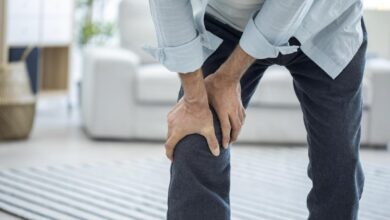
Causes Of Sitting Wind
Sitting wind, also known as angina pectoris in Latin, is a chest pain that happens due to interruption of blood flow to the heart muscle tissue. Generally, patients often described chest pain due to sitting wind is quite similar to chest pain due to other diseases. Hence, this wind chest pain is often mistaken for a symptom of other conditions, such as inflammation of the lungs and acid reflux.
Symptoms of sitting wind in the form of chest pain such as being crushed, pressed, stabbing, burning, or feeling full. Besides, the pain can also radiate to the neck, jaw, shoulders, arms and back. Other symptoms that can accompany the pain may include excessive sweating, even though the weather is not hot, tiredness, dizziness, shortness of breath and nausea.
What is the cause? Sitting wind occurs when the blood vessels of the heart, called coronary, experience narrowing. The function of heart coronary vessels is to drain oxygen-rich blood to the heart muscle, so that the heart can pump blood sufficiently.
However, when the coronary arteries are narrowed or blocked, the supply of oxygen to the heart muscle will be disrupted so that the heart cannot pump blood properly. This problem is also known as coronary heart disease.
The culprit of coronary heart disease is atherosclerosis which is the formation of plaque or fat deposits in the coronary arteries. Furthermore, the already narrowed blood vessels can be increasingly narrowed when the patients do daily activities.
On top of coronary heart disease, sitting winds can also arise due to the narrowing of the coronary arteries due to the tension of the muscles of blood vessels. The worrying part is that this wind chest pain can happen at any time, even when someone is resting.
There are some factors that can increase the risk of coronary heart disease which causes wind to sit on the sufferer. A number of factors may include the following:
- Smoking habits
- Lack of exercise
- History of high blood pressure or hypertension.
- High levels of bad cholesterol (LDL) and triglycerides.
- Diabetes.
- Obesity
- Age – Men; above 45 years of age. Women; above 55 years of age
- Have a family history of heart disease
- Consuming alcoholic drinks too much
Nevertheless, certain conditions can lead to symptoms that resemble gas pain in the chest, which refers to trapped wind, condition of gas and bloating. There is always a certain amount of gas or trapped wind in the tummy or bowel. However, some people are sensitive to that normal amount, which they will experience pain or burp excessively. Besides, large amounts of wind will be passed as the gas passes through the bowel.
Most of the gas or wind comes from air swallowed while you are drinking or eating. When you are sitting up,the air tends to go back up the oesophagus, and eventually escapes again out through your mouth in the process of belching. Ironically, if you are lying down, the air tends to pass downwards causing gas in your stomach. You will have bloating symptoms eventually. In addition, the gas will enter the small bowel (small intestine) and escape through the back passage (anus). Most people often refer to this condition as flatulence or farting. Some other causes that can lead to excessive gas may include:
- Too much fiber – Eating too much of a certain type of fiber can cause excessive gas. This is because the fiber may stay longer in the gut than other food components. Besides, it is broken down by bacteria which results in gas.
- Gallbladder or biliary tree diseases
- Artificial sweeteners
- Excess carbonation – carbonated drinks
- Digestive conditions



